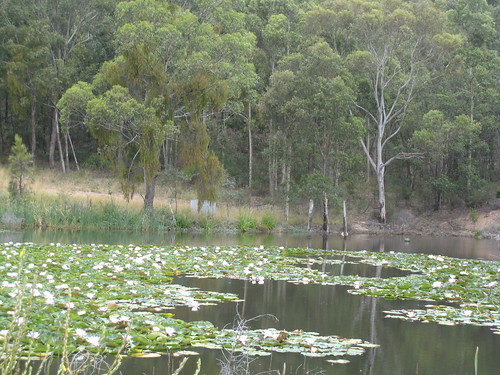
Lilies and mistletoe. The dam at Pokolbin.

From de Beyer's road
I've been working my way through Walter Scott's novels. They are amazing. I love the long ironic introductions, with their kindly portraits of pompous, garrulous, or ignorant people and others, chatting about books, their readers and their purposes. The portraits from literary and legal life. I love the extensive footnotes, and the fact that he cannot say an unkind word about anyone.
At first you tend to skip the introductions and ignore the footnotes. But by the 10th book or so, they have started to grow on you. Some books have several introductions and prefatory notes. Sometimes they are wonderfully comic. They nearly all seek to show the tale was inspired by some factual happening.
I also love the essential equality of all the characters, peasants chat to queens and dukes, servants give more than as good as they get from their masters and are often funds of great goodsense. Legal eagles and those who aspire to be, wander through the tales and are made gentle fun of.
In any case, I could not recall the device of footnoted novels, which is Scott's practice. And had noted it also in Manzoni's "I promessi sposi" (but used there to quote written sources from the famine (1628) and the plague (1630) and hence function as they do in modern scholarship, while Scott's footnotes often use spoken sources and it's always unclear whether the sources are in anyway available.)
(Of course, when I hunted up footnoted novels on the internet, I found I had forgotten Umberto Eco, and Nabokov and of course, skads of others, including Georges Perec, mostly 20th Century writers. But each of them using footnotes for different purposes.
(The photos are from Christmas at Pokolbin. Such a beautiful place.)

No comments:
Post a Comment